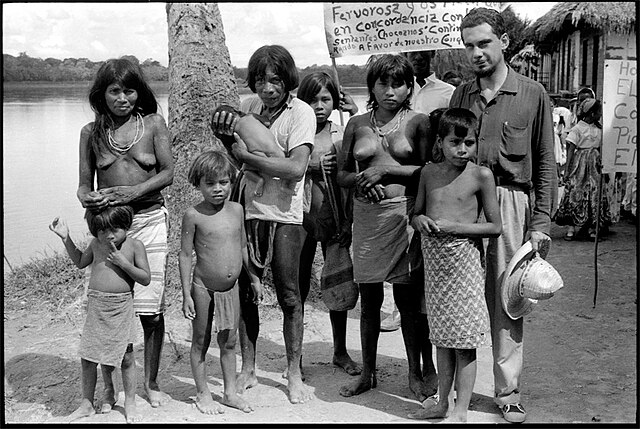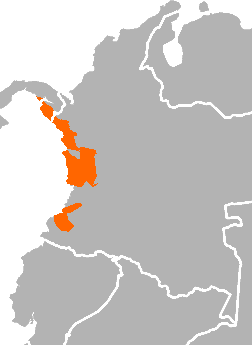Top Qs
Timeline
Chat
Perspective
Choco languages
Language family of Colombia and Panama From Wikipedia, the free encyclopedia
Remove ads
The Choco languages (also Chocoan, Chocó, Chokó) are a small family of Indigenous languages spread across Colombia and Panama.

Remove ads
Family division
Choco consists of six known branches, all but two of which are extinct.
- The Emberá languages (also known as Chocó proper, Cholo)
- Noanamá (also known as Waunana, Woun Meu)
- Sinúfana (Cenufara) † ?
- Anserma †
- Caramanta †
- ? Arma † (unattested)
At least Anserma, Arma, and Caramanta are extinct.
The Emberá group consists of two languages mainly in Colombia with over 60,000 speakers that lie within a fairly mutually intelligible dialect continuum. Ethnologue divides this into six languages. Kaufman (1994) considers the term Cholo to be vague and condescending. Noanamá has some 6,000 speakers on the Panama-Colombia border.
Jolkesky (2016)
Internal classification by Jolkesky (2016):[1]
- Choko
- Waunana
- Embera
- Southern
- Northern
Remove ads
Language contact
Jolkesky (2016) notes that there are lexical similarities with the Guahibo, Kamsa, Paez, Tukano, Witoto-Okaina, Yaruro, Chibchan, and Bora-Muinane language families due to contact.[1]
Genetic links between Choco and Chibchan had been proposed by Lehmann (1920).[2] However, similarities are few, some of which may be related to the adoption of maize cultivation from neighbors.[1]: 324
Genetic relations
Choco has been included in a number of hypothetical phylum relationships:
- within Morris Swadesh's Macro-Leco
- Antonio Tovar, Jorge A. Suárez, and Robert Gunn: related to Cariban
- Čestmír Loukotka (1944): Southern Emberá may be related to Paezan, Noanamá to Arawakan
- within Paul Rivet and Loukotka's (1950) Cariban
- Constenla Umaña and Margery Peña: may be related to Chibchan
- within Joseph Greenberg's Nuclear Paezan, most closely related to Paezan and Barbacoan
- with Yaruro according to Pache (2016)[3]
Vocabulary
Loukotka (1968) lists the following basic vocabulary items for the Chocó languages.[4]
Remove ads
Proto-language
For reconstructions of Proto-Chocó and Proto-Emberá by Constenla and Margery (1991),[5] see the corresponding Spanish article.
See also
- Embera-Wounaan, who speak the Choco languages, Embera and Wounaan
- Quimbaya language
References
Bibliography
External links
Wikiwand - on
Seamless Wikipedia browsing. On steroids.
Remove ads

